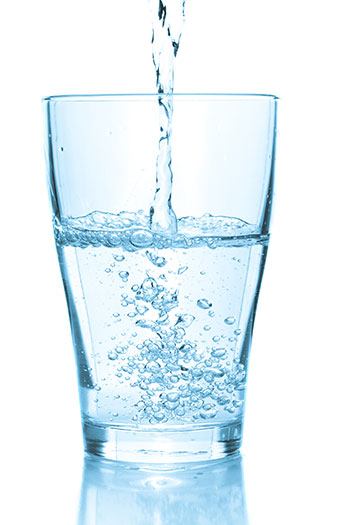Answers to some common questions about Reverse Osmosis systems, how they work
- Why are Reverse Osmosis systems so popular?
- Where are RO units stored?
- Is Reverse Osmosis water worth the investment?
- Can you connect it to a fridge?
- Can you connect it to an ice machine?
- How much water do Reverse Osmosis systems produce each day?
- Are Reverse Osmosis systems noisy?
- Do you need electricity to operate Reverse Osmosis systems?

- How does Reverse Osmosis filtration compare to tap water?
- How long do Reverse Osmosis systems last?
- Will a water softener harm the reverse osmosis filter?
- Will RO water leach minerals from our bodies?
- What substances does Reverse Osmosis filtration remove?
- What are the health benefits of an RO water system?
- What are the health risks?
- Is there an environmental impact of using Reverse Osmosis filtration?
Why are Reverse Osmosis systems so popular?
Reverse Osmosis filtration systems are and continue to be popular because, first and foremost, they produce pure and fresh tasting water.
Consumers emphasize that there is a notable difference in the taste and quality of the drinking water from using these units.
Our customers view reverse osmosis systems as investments rather than expenses.
Additionally, the units are cost effective and save consumers costs overtime. They diminishing the costs of bottled water and alleviate any unforeseeable costs that would derive from drinking unfiltered or impure water.
Consumers have confessed to drinking more water once they have purchased the RO Fil because of the great-tasting water.
Where is a Reverse Osmosis system stored?
Reverse Osmosis systems are typically stored under your kitchen sink or counter to supply purified water.
This is a prime installation location to facilitate a pipe water system. However, depending on the location of your R0 system i.e. your office, a bathroom, it may be stored under a cupboard or sink outside of the kitchen.
It is important to ensure that there is enough space underneath the counter to store both the water system as well as the storage tank. RO systems tend to take up about half of one side under your sink. If you intend on hanging in the system on the way of the counter, ensure it is hung with enough space (at least 3 inches) from the cabinet floor to the bottom of the filter-housing sump.
Refrain from storing additional items or materials underneath the counter where your RO system is located to avoid obstructing the system.
Is an RO System worth it?
Yes, A Reverse Osmosis system is definitely worth the investment.
Reverse Osmosis systems remove about 99 percent of the impurities that persist in tap water. By purchasing a unit, you make a conscious decision to choose your health first. The system safeguards against the contraction of some of the most common water maladies, such as lead or magnesium poisoning and cholera.
In addition, the mechanism of an RO system makes it the best option for water filtration. Specifically, the semi-permeable membrane contains tiny pores that are restrictive to compounds including natural minerals and salts. The membrane is also restrictive to pathogens as well as bacteria. As a result, it is the ultimate defense mechanism for the contaminants that linger in water.
RO systems are also worth the financial investment.
They tend to save cost overtime when compared to the amount of money that is allocated to the purchase of water bottles and jugs.
An RO system is not only worth its weight economically, but it is also valuable, and perhaps most importantly so, for the preservation of your health. The quality of the water is optimal for drinking, cooking, and showering and poses no threat to you or your family’s well being.
5 Stage RO Water Filtration
Read more about our state of the art 5 stage RO water filtration system.
Can a Reverse Osmosis system be connected to my fridge or ice machine?
Yes, reverse osmosis systems can be connected to refrigerators and ice machines.
However, there are a few factors that will affect how this can be completed, and part of why we always speak with homeowners at their own home as part of our initial consultation.
Firstly, when connecting your RO system to your refrigerator, you must take into consideration the pressure that you’ll receive from the Reverse Osmosis system relative to the fridge. To put this into perspective, pressure from the RO system is about two thirds of the incoming line pressure. As a result, it is best to check with your refrigerator manufacture to assess whether the RO system pressure will have a negative or positive impact.
Secondly, connecting your RO system to an ice machine will depend on the location of your ice machine as well as the plumbing in your home.
In newer homes, plumbing accommodates icemakers and therefore it is not a hassle. However, in an older home, this connection has to be done manually and may need an initial assessment to determine whether or not it can be completed.
We recommend connecting your RO system to your ice machine to ensure the highest quality in ice; one that is clear and tasteful. In addition, having it connected to your ice machine works to preserve the solenoid valve that regulates the icemaker.
How much water can a Reverse Osmosis system produce each day?
The amount of purified water produced daily by a Reverse Osmosis system depends on the size and brand of the system.
For example, some units produce 75 gallons of purified water in a single day while others produce 16 gallons daily.
The one that is most efficient depends on your needs. If you are using close to 75 gallons of water on a daily basis, it is best to invest in a unit that has a larger production membrane.
Is a Reverse Osmosis Filtration System Noisy?
No, a Reverse Osmosis filtration system is not noisy, but does have normal slight sounds that can be heard while it processes water.
Specifically, the RO system usually has a light humming sound as water is processed and dispensed. This should not alarm you. This sound is a direct result of the pressure change inside the unit as it processes the water.
Other sounds from your RO system that are also normal include:
- A slight dripping noise from the sink drain to reject process water from flowing down the drain
- A whining sound of the tank pressurizing just after installation as the system is up and running for the first time
Again, these sounds are normal and are far from noisy and distracting.
Do you need electricity to operate an RO system?
No. Reverse Osmosis units do not need electricity to operate.
Instead, RO systems rely on water pressure. In some exceptional cases, you can rely on electricity if you add an ultraviolet lamp or an electric pressure boost pump to your existing RO unit.
Outside of these non-essential upgrades, your unit can operate just fine without any electrical assistance.
If you are interested in learning more about these add-ons and how they can enhance your Reverse Osmosis system, you can consult with one of our experts.
How does Reverse Osmosis water compare to tap water?
Purified water is beneficial and favourable because it removes unhealthy contaminants that generally exist in your tap water.
Specifically, RO water is free of lead, that when consumed, can make you, your family members and your pets very sick. Other contaminants that are removed by the reverse osmosis water filtration system include sodium, potassium, and chloride among others which, although or body needs, is unhealthy at such high concentrations and amount in your drinking water.
Drinking RO purified water is particularly beneficial for individuals with high blood pressure, liver or kidney diseases or sodium restrictions. RO water is also safe for consumption by cancer patients. It is important for patients to drink water that will enhance their treatment and recovery rather than inhibit them.
Tap water, on the other hand, contains heavy metals, chemicals, nuclear material, and potential allergens. While drinking a glass of tap water here and there might not seem unhealthy initially, the continuous consumption of this water can lead to lead poisoning and the development of diseases such as cholera, typhoid, and worm disease among others.
Drinking reverse Osmosis water is not only the healthiest option for you and your family, but it also tastes the most refreshing.
How long will Reverse Osmosis systems last?
Reverse Osmosis systems can last an eternity as long as you engage in proper maintenance and service procedures.
It is imperative to replace the parts of the unit that wear out and can result in contaminating your water if it goes unnoticed for far too long. This includes the storage tank and the sink faucet.
Try to clean or inspect the unit every four to six months to ensure that it is in optimal working condition.
The membrane of your RO system, which is the central operating portion of your unit, has a shelf life of about three to five years. Regular maintenance will secure a long lasting equipment.
Will a water softener harm the RO system?
No, a water softener will not harm the RO system.
A water softener is a unit used to remove minerals, namely calcium and magnesium in the water that make the water hard. The process of softening water occurs when you connect a water softener unit directly to a water supply. This unit will remove the ions that make your water hard, thereby making your water more drinkable.
A water softener actually works to extend the life of the membrane of the reverse osmosis unit.
Calcium and magnesium are the most difficult minerals to remove from the membrane and so a water softener works as an aid rather than a disservice to your RO filter.
Water softeners provide many benefits around the home.
5 Stage Reverse Osmosis Water Filtration
Read more about our state of the art 5 stage RO water filtration system.
Will Reverse Osmosis water leach minerals from our bodies?
No, reverse osmosis will not leach minerals from your bodies; this is a common misconception.
Calcium and magnesium are indeed essential minerals for our bodies. However, the average person consumes a significant amount of calcium and magnesium in other nutritious foods and beverages that the amount removed by your drinking water system, is inconsequential and works to benefit rather than hinder your health.
Cellular research has revealed that reverse osmosis actually has the opposite effect on our bodies. Consumers are encouraged to use reverse osmosis drinking water systems to promote healthy water consumption.
What substances does a reverse osmosis system remove?
Unfortunately, the drinking water from your tap contains a lot of unhealthy and impure minerals that can result in serious harm, especially when consumed over a long period of time. Reverse Osmosis filters work to remove a series of minerals and elements including the following:
- Protozoa
- Bacteria such as E. coli, salmonella, and shigella
- Viruses such as hepatitis A and Rotavirus
Reverse Osmosis units are also credited for removing chemical contaminants such as copper, chlorine, lead, and chromium and may reduce the presence of calcium, magnesium, sulfate and arsenic among others.
Collectively, reverse osmosis systems work to alleviate metals, microorganisms and minerals that pose a threat to your health. Although are bodies rely on some of these substances, being exposed to them in your drinking water consistently and “over consuming” some of these minerals can prove most harmful overtime.
What are the health benefits of an RO Water System?
One of the primary reasons RO water systems are so popular is the nature of its health benefits.
Unfiltered water contains contaminants that have negative and harmful effects on the body. No matter how healthy you may perceive the water around your home, there are risk factors so long as the water has not been filtered.
Reverse osmosis works to reduce the contaminants in your drinking water.
This includes
- lead
- copper
- arsenic
- cyst
- barium
- nitrates
- and total dissolved fluid
There are many reasons a water filtration systems is important.

Facts About Reverse Osmosis
Read more about contaminents removed from drinking water through reverse osmosis.
RO filters also work to reduce the sodium that persists in soft water.
While water softening works to eliminate the elements of hard water, it is not the end all be all of the process and should not be considered as a purifying method.
Soft water still contains sodium.
An RO water filter paired with water softeners, work to produce the purest form of water you can consume for drinking, bathing, cooking, etc.
Home Reverse Osmosis systems also enhance the quality of your food.
Purer water means purer food, fresh taste and overall health improvement.
Finally,
An RO system reduces the need to purchase bottled water.
Plastic bottles contain their own contaminants and minerals, especially after prolonged storage and distribution.
An RO System keeps your water clean, fresh, and always drinkable.
What if any are the health risks of RO Water?
Home Reverse Osmosis Systems provide a reliable source of clean water.
However, the process of RO involves the stripping away of essential minerals such as calcium and magnesium. As a result, there is an ongoing debate on the validity of the process in water purification.
Calcium and magnesium are essential for the development of your bones.
As such, it is important to ensure that you consume a sufficient amount of calcium and magnesium on a day-to-day basis in other parts of your diet.
Ultimately, it is important to ensure that you are replacing nutrients stripped by filtration with other healthy diet options.
Is there an environmental impact of using an RO system?
Yes, there’s an environmental impact.
First and foremost, the purchase of this type of drinking water systems automatically reduces the purchase of plastic water bottles, which contributes to the reduction of environmental harm that would derive from the production, distribution, and disposal of plastic bottles.
On the other hand, According to the University of Wisconsin School of Medicine and Public Health, in-home reverse osmosis units may waste between two and five gallons of municipal water for each gallon of purified water produced. The implication here is that this extra water flow will amount to higher household water bills and taxes on waste water treatment systems.
RO water is highly favoured for its low-energy consumption mechanism.
However, demands continue to increase to make the system more environmentally friendly and as technology continues to improve, the industry is taking this concern more and more seriously.
